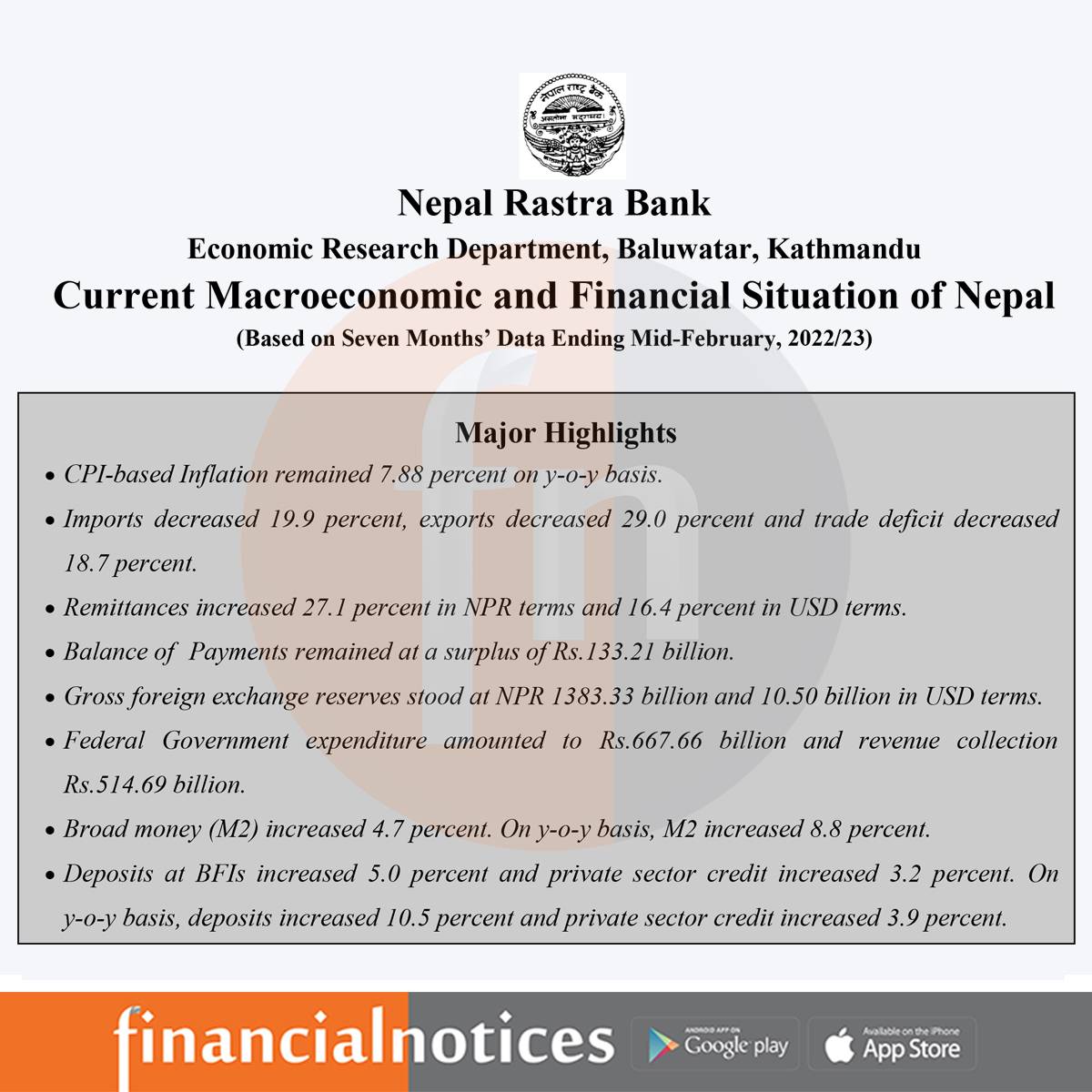The Nepal Rastra Bank Economic Research Department has released a report on the current macroeconomic and financial situation of Nepal based on data from the seven months ending mid-February 2022/23. The report provides insights into various economic indicators important for assessing the country's overall economic performance.
According to the report, the CPI-based inflation rate remained stable at 7.88 percent on a year-on-year basis. Nepal's trade balance saw some improvement as imports decreased by 19.9 percent, exports decreased by 29.0 percent, and the trade deficit decreased by 18.7 percent. Remittances, a crucial source of foreign exchange, increased by 27.1 percent in NPR terms and 16.4 percent in USD terms. The balance of payments remained at a surplus of Rs.133.21 billion, while gross foreign exchange reserves stood at NPR 1383.33 billion and USD 10.50 billion.
However, the report indicates that the government's fiscal performance during the period was not as strong, with federal government expenditure amounting to Rs.667.66 billion and revenue collection amounting to Rs.514.69 billion. The report also suggests that there was a moderate increase in liquidity in the banking system, as broad money (M2) increased by 4.7 percent, deposits at BFIs increased by 5.0 percent, and private sector credit increased by 3.2 percent.

Overall, the report suggests that the Nepalese economy is on a positive trajectory and is making progress toward achieving sustainable economic growth.







